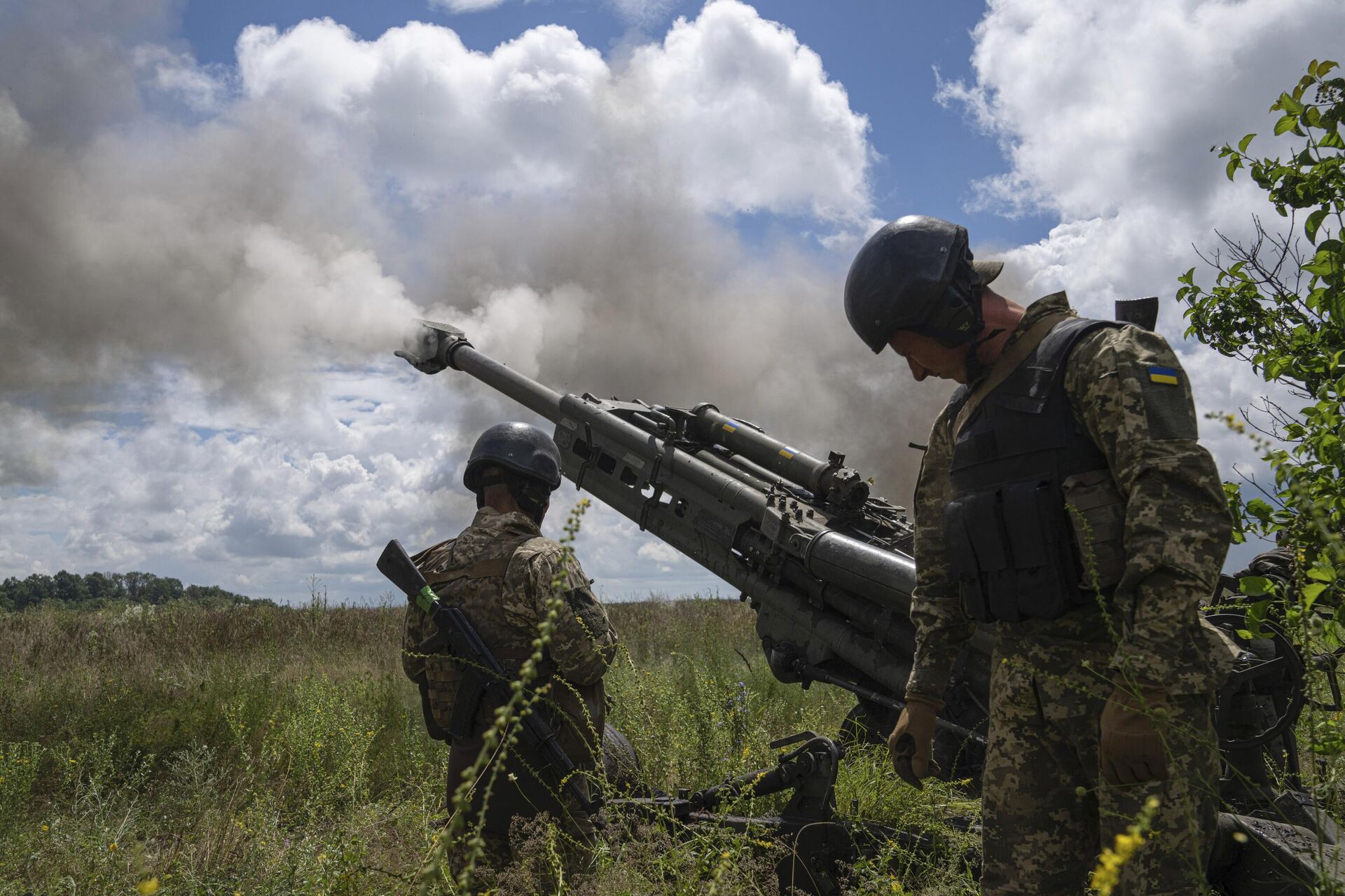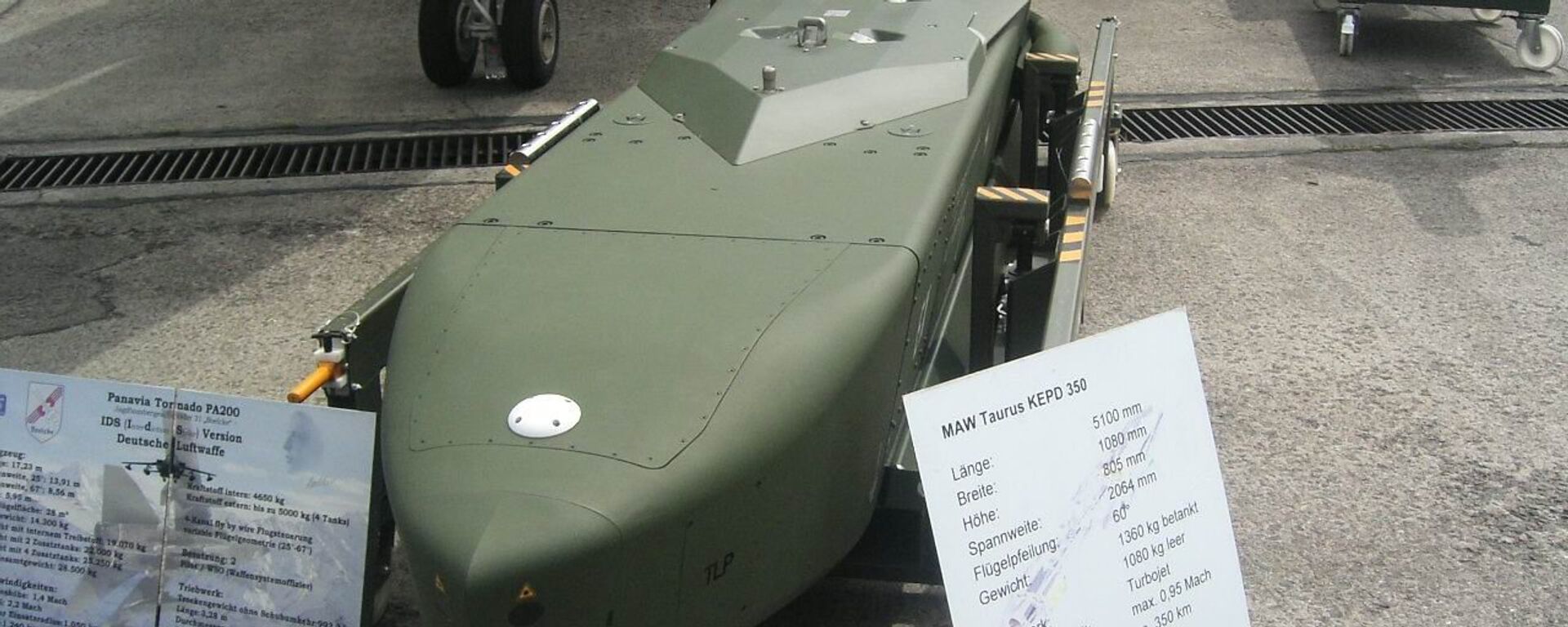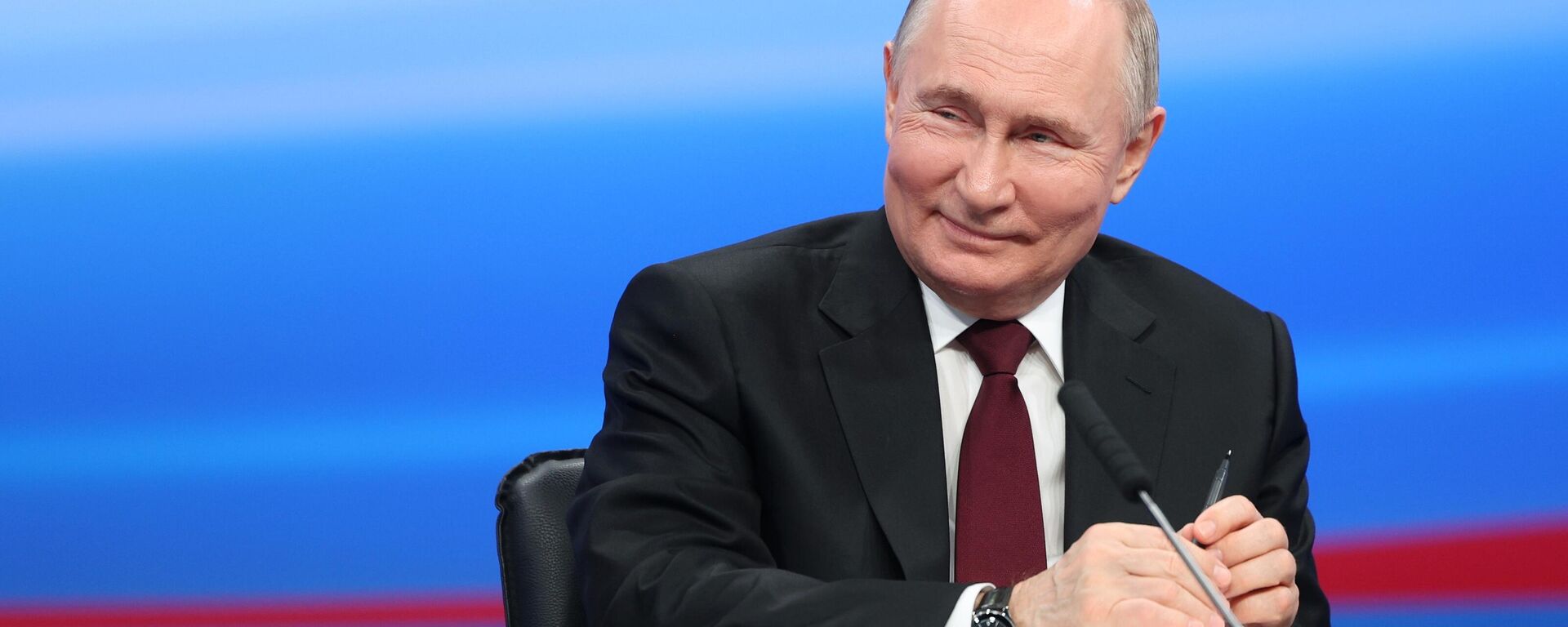What's the 'Buffer Zone' Putin Proposed in Ukraine?

© AP Photo / Vadim Ghirda
Subscribe
At a press briefing on the outcome of the 2024 election, newly re-elected Vladimir Putin stated that Russia could be forced to create a "buffer zone" in the territories currently controlled by the Kiev regime.
President Vladimir Putin told journalists on Sunday that a potential "buffer zone" could be created to prevent Kiev from shelling Russia's territories with NATO-grade weapons in its possession.
Later in the day, Kremlin spokesman Dmitry Peskov clarified that the measure proposed by the president would be necessary to thwart continuous artillery and drone strikes by the Kiev regime against Russia's residential areas and civilian facilities.
"They can only be secured by creating a certain corridor, a certain buffer zone, so that any means that the enemy can use to strike are beyond reach," Peskov told reporters.
"It is necessary to distinguish what types of [buffer] zones are meant," Sergei Poletaev, a Russian political analyst, told Sputnik. "The first type is established as a result of a ceasefire agreement. The second is established as a result of forceful actions by one of the parties."
"In our case, the second option appears to be more relevant: that is when one of the parties organizes a military operation to ensure a certain security zone outside its borders, citing the fact that a threat comes from a neighboring state," he said.
According to Poletaev, Russia attempted to negotiate a kind of buffer zone with other participants of the Normandy Four within the framework of the 2014 and 2015 Minsk Agreements to ensure Donbass civilians' security amid Ukraine's indiscriminate shelling of the region.
"This was formulated as the withdrawal of heavy weapons from the demarcation line. In the annex to the Minsk agreements, these [zones] were even drawn on the map," the analyst said.
The Kiev regime failed to observe the agreements, however, while Ukraine's Western backers later admitted that they used the Minsk Accords as an operational pause for the Ukrainian military buildup.

Ukrainian servicemen fire at Russian positions from a US-supplied M777 howitzer in Kharkov region, on Thursday, July 14, 2022.
© AP Photo / Evgeniy Maloletka
The depth of the buffer zone depends on what kind of weapons would be used by the Ukrainian military, Poletaev continued.
"If we are talking about cannons or rocket artillery, then this is approximately 40-50 kilometers. That is, the most common Western artillery systems used by Ukrainians are M777 howitzers. They have a range of 20 to 40 kilometers, depending on the type of shells they use. The sophisticated guided Excalibur projectile's firing range is [slightly over] 40 kilometers. The Grad systems, including upgraded versions, or the Czech [RM-70] Vampir also have a range of up to 40 km. That's the depth. (…) That is, we are talking about depriving the enemy of the possibility of massive shelling of Belgorod [and other Russian border cities]."
At the same time, however, the buffer zone won't prevent the enemy from attacking the Russian territory by drones and long-range missiles, the analyst remarked. Most recently, Ukraine has stepped up drone strikes on Russian facilities, while an intercepted conversation by senior German officers exposed their plans to use Taurus missiles against Russia's civilian objects. The Taurus cruise missile boasts a firing range of up to 500 km.
Judging from the Kiev regime and the collective West's rhetoric, they are unwilling to hold negotiations on ceasing hostilities that inflict damage on the Russian civilian population, Poletaev noted. Therefore, according to the analyst, the only solution to this dilemma is "moving the frontline" away from Russia's borders. Ukraine's shelling and incursion into Russia's border regions leave Moscow with little if any other сhoice, Poletaev believes.
Russian President Putin touched upon creating a buffer zone back in June 13, 2023, in response to Ukraine's incursions, sabotage attacks, and shelling of the Russian territory.
"The possibility of shelling our territory from Ukraine remains in place," the president said at a meeting with war reporters covering the Russian special military operation. "Here are several solutions: first, bolstering the effectiveness of counter-battery struggle. But this does not mean that there won’t be missile strikes against our territory. But if this continues then we will apparently have to consider the issue - and I’m saying this very carefully - of creating a buffer zone on Ukraine's territory at such a distance from where it could be impossible to reach our territory."
Putin noted at the time that the Kremlin had to see how the situation evolves. As Ukraine's sabotage attacks and terrorist actions against Russian civilians continue, Moscow appears to double down on considering the option.




